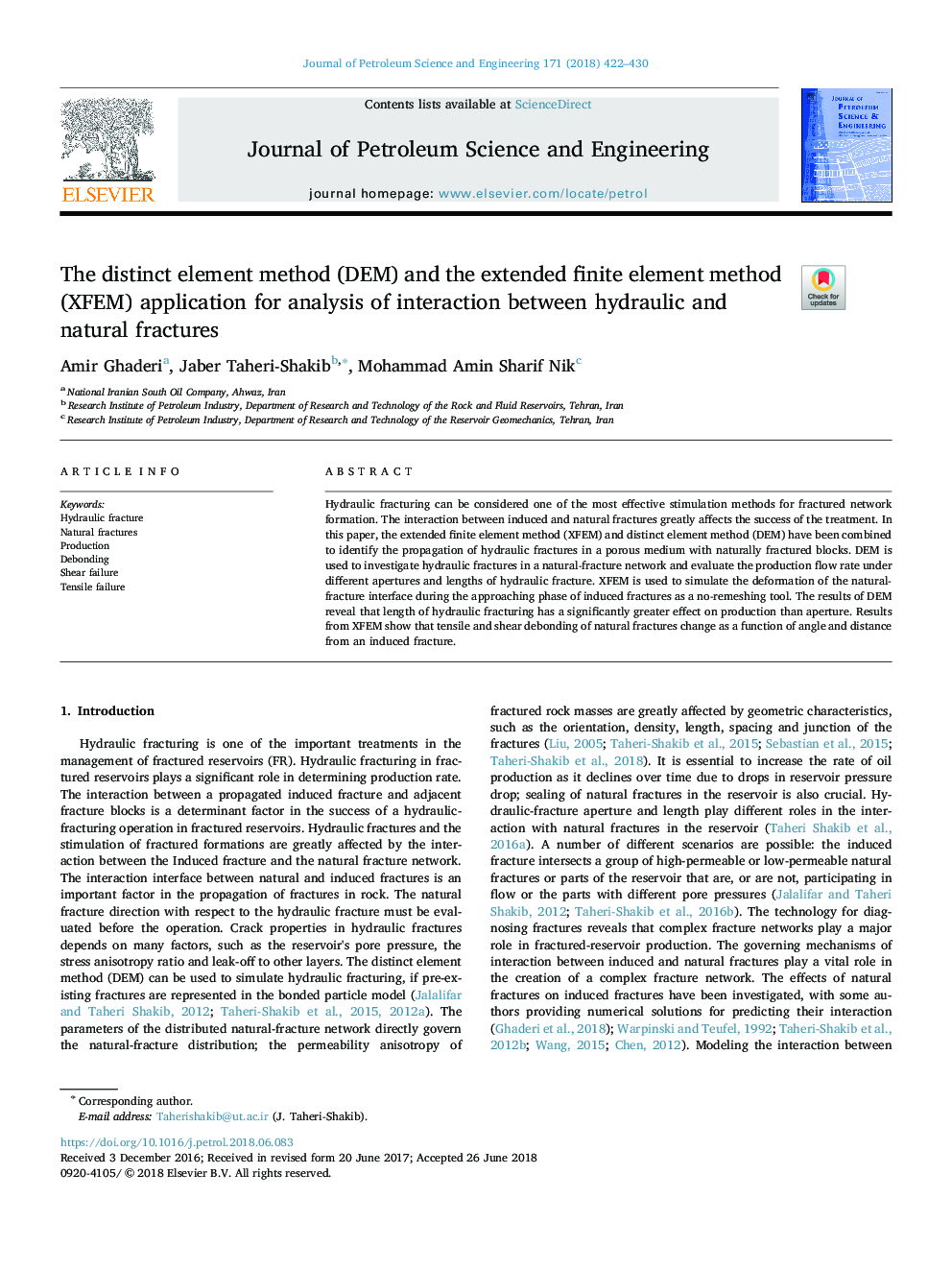| Article ID | Journal | Published Year | Pages | File Type |
|---|---|---|---|---|
| 8124325 | Journal of Petroleum Science and Engineering | 2018 | 9 Pages |
Abstract
Hydraulic fracturing can be considered one of the most effective stimulation methods for fractured network formation. The interaction between induced and natural fractures greatly affects the success of the treatment. In this paper, the extended finite element method (XFEM) and distinct element method (DEM) have been combined to identify the propagation of hydraulic fractures in a porous medium with naturally fractured blocks. DEM is used to investigate hydraulic fractures in a natural-fracture network and evaluate the production flow rate under different apertures and lengths of hydraulic fracture. XFEM is used to simulate the deformation of the natural-fracture interface during the approaching phase of induced fractures as a no-remeshing tool. The results of DEM reveal that length of hydraulic fracturing has a significantly greater effect on production than aperture. Results from XFEM show that tensile and shear debonding of natural fractures change as a function of angle and distance from an induced fracture.
Related Topics
Physical Sciences and Engineering
Earth and Planetary Sciences
Economic Geology
Authors
Amir Ghaderi, Jaber Taheri-Shakib, Mohammad Amin Sharif Nik,
